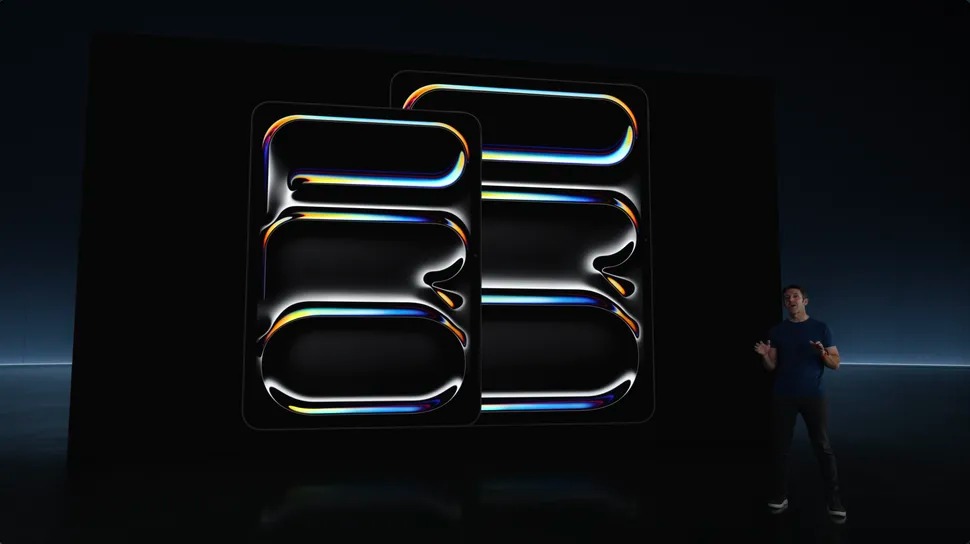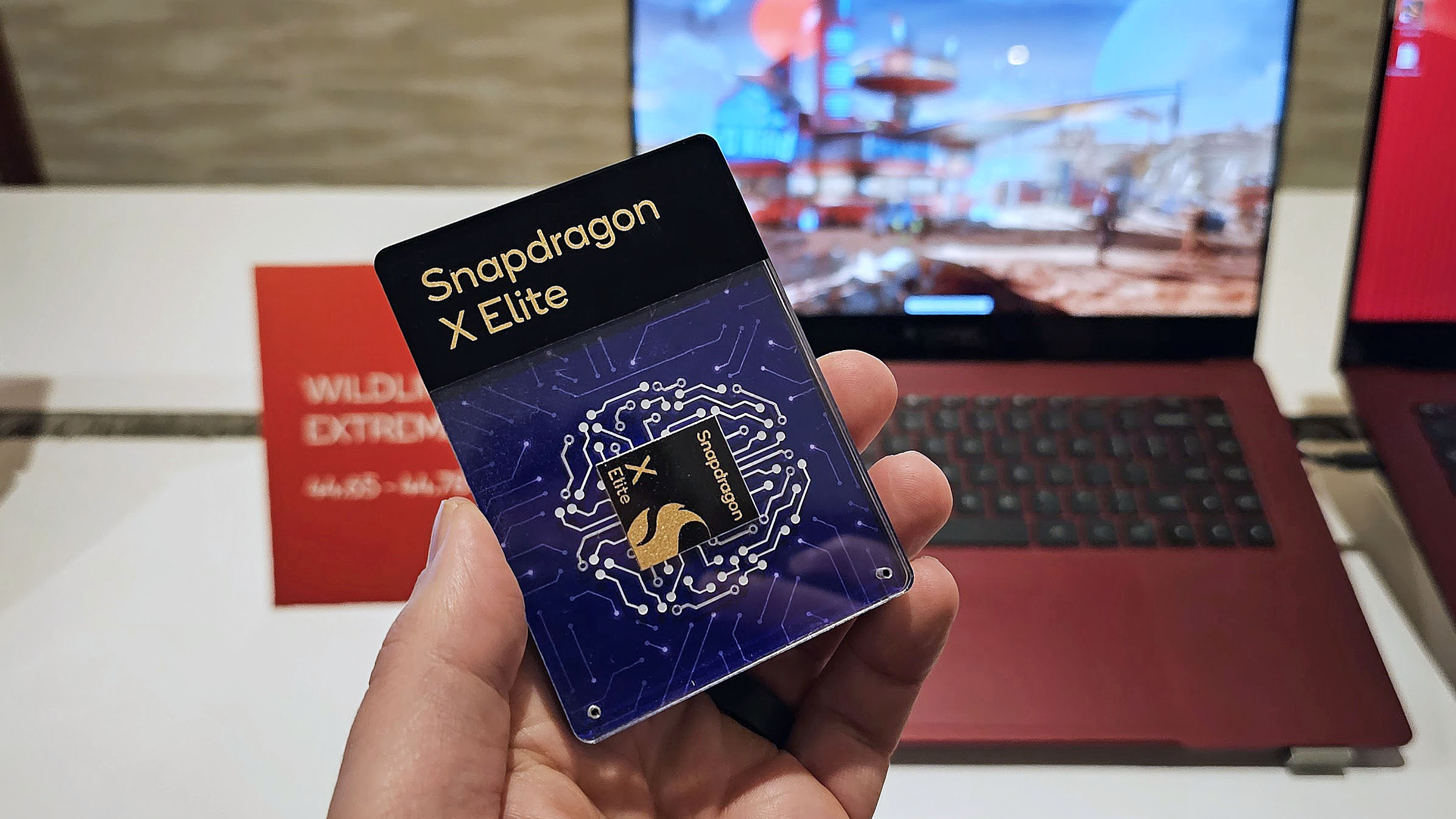
What you need to know
- Apple unveiled its M4 chip, which will power the new iPad Pro.
- The M4 promises 50% faster CPU performance than Apple's M2 and is four times faster than the M2 in GPU performance.
- Apple's announcement comes just weeks before Microsoft is expected to announce new Surface PCs powered by Qualcomm Snapdragon X Elite CPUs.
- Qualcomm's Snapdragon X Elite has also compared well against Apple's M2 processor.
Apple just unveiled its M4 processor, which promises impressive AI performance. The M4 processor will power the OLED iPad Pro, an impressively thin device featuring an OLED display. And presumably, make its way through Apple's lineup over time. Our colleagues at iMore covered the M4 concerning the new iPad Pro, plus other fun stuff like a new Apple Pencil that can do a barrel roll. However, Windows enthusiasts and those curious about Qualcomm's new Snapdragon X Elite are likely more interested in how Apple's new chip compares to what Qualcomm offers.
2024 looks to be the year for Windows 11 on Arm. Microsoft has new Surface hardware powered by Snapdragon X Elite processors. Qualcomm's new chips will also power PCs from other big-name manufacturers. But did Apple steal Qualcomm's thunder and undercut the Snapdragon X Elite (and the recently announced Snapdragon X Plus)?
Let's break things down.
What we know so far

We still need benchmarks and more figures to judge Apple's M4 properly (Apple is notoriously not a fan of actual numbers), but a few things we know help us compare the new chip to the Snapdragon X Elite and Snapdragon X Plus.
Right now, we can't compare the M4 and Snapdragon X Elite on the CPU side since we lack benchmarks for the M4. There's a fair chance Apple's M4 will outperform the Snapdragon X Elite in CPU benchmarks, but both processors are expected to impress.
The Snapdragon X Elite is the top dog for TOPS (Tera Operations per Second). TOPS measures the performance of Neural Processing Units (NPUs), which are specialized to perform AI tasks. NPUs will become increasingly important as more AI tasks run on devices locally rather than through the cloud. Apple states the M4 offers 38 TOPS, while Qualcomm promises up to 45 from the Snapdragon X Elite and the lower-tier Snapdragon X Plus.
Based on what we know so far, Apple's M4 seems to take the cake on the GPU side, an area that Apple has heavily invested in, starting with the M3.
Apple built the M4 using 3nm technology (technically 3.5nm), and the processor has a 10-core CPU, specifically four performance and six efficiency cores. The Snapdragon X Elite has 12 performance cores, two of which can clock higher for turbo, at 4nm (although discussion of "nodes" in 2024 is mostly marketing at this point). Meanwhile, the Snapdragon X Plus has 10 performance cores, but none can turbo.
The reality is that these next-gen Arm processors will be suitable for computing for the largest swatch of the market. While it is tempting to pick a side, Apple and Qualcomm have done impressive work here, and that's good for consumers.
Early figures and details suggest that the Apple M4 may win regarding CPU performance (but see below) and definitely win for GPU performance.
Still, the Snapdragon X Elite will be more capable of AI processing. Of course, that's all based on hardware specs. We still have to see how Windows 11 handles the new chips from Qualcomm. Luckily for those interested, Build 2024 will focus heavily on Windows 11 on Arm.
Snapdragon X Elite vs Apple M4 vs Apple M2

When Snapdragon X Elite benchmarks, and performance results started leaking and then being officially shared by Qualcomm, some mocked Qualcomm's comparison of its upcoming processor to the Apple M2. Apple had since released the M3, so a comparison to the latest processor would make more sense.
Well, not exactly. Back in November, the original title of one of our articles was "How does the Apple M3 compare to the Snapdragon X Elite? The hell if we know." That piece has since been updated since we have more benchmarks and figures. We now know much more about M3 and the Snapdragon X Elite. However, the fact remains that a comparison to Apple's M2 proved useful. That became truer when Apple framed the M4's figures against the M2.
Apple's presentation and official graphics highlighted that the M4 has a 50% faster CPU than the M2, not the M3. That's because 50 is a big number and looks good on a slide (and the previous iPad Pro used the M2, not the M3, making it a realistic comparison). The GPU figures also stack the M4 against the M2, stating the new processor is 4x faster on the GPU side of things than the M2.

That said, Qualcomm's latest numbers from a few weeks ago show that the Snapdragon X Elite trounces the M3 with multi-threaded performance (15,610 versus 12,154 on Geekbench v6.2, a difference of 28%). Going core-to-core, the M3 (12,154, Geekbench) still falls behind by about 10%, going against the 10-core Snapdragon X Plus (13,350, Geekbench).
Going up against the beefier Apple M3 Pro (15,387 on Geekbench) and the Snapdragon X Elite, a top-tier SKU still edges out that SoC (15,610).
So, seeing as the Snapdragon X Elite is 28% faster in multi-threaded performance than the Apple M3, the question is this: Does the new Apple M4 make up that 28% difference in performance? Considering that the M3 was only about 15% faster than the M2 and Apple did not do a node switch, we will avoid caution and say no, the new M4 is not 28% faster than the M3, or rather, it seems unlikely.
Apple's M-series and diminishing returns
The jump to Arm architecture represented a significant shift in computing. Apple (rightfully) received praise for its M1 chips, which blew away expectations and delivered a previously unheard-of combination of power and efficiency. The M2 then saw significant improvement, but not as much as expected. The bump to M3 saw even less of a jump despite the node jump.
You've likely sensed a pattern by now. Apple burst onto the scenes with the M1 but is now starting to run into physical limitations. Even Apple can't defeat the laws of physics, so it isn't easy to continue the pace of improvement seen from M1 to M2 across future generations. YouTuber Snazzy Labs has a comprehensive video that breaks down the limits Apple faces and what the company can do to innovate.
The long-in-short is that companies like Qualcomm have an opportunity to play catchup. Apple is ahead of the competition regarding Arm chips for now, but the gap will close quickly if tech giants like Qualcomm and Microsoft keep investing.







